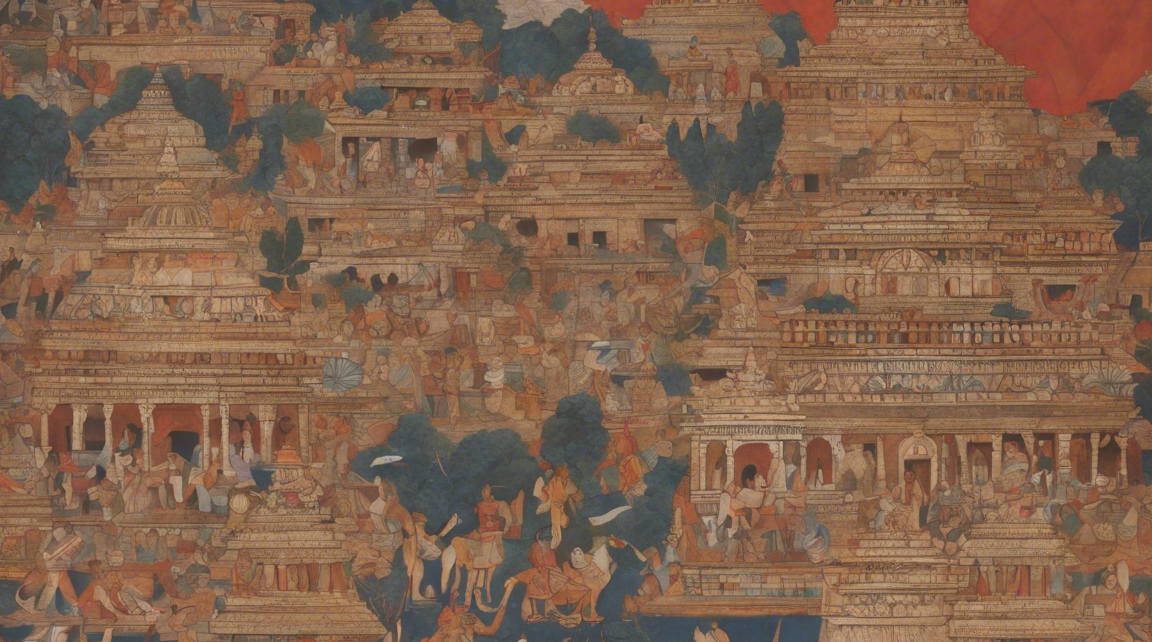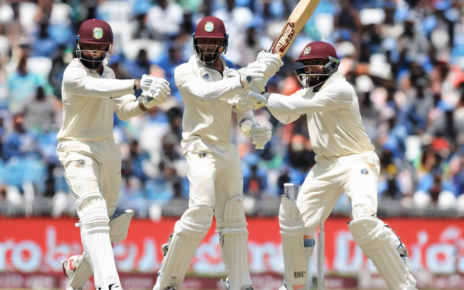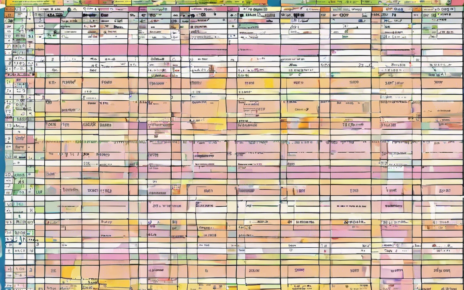India and Nepal are two countries located in South Asia, sharing a border and a rich history of cultural exchange. Despite their geographical proximity, these two nations boast unique and distinct cultures that are worth exploring and comparing. From traditional practices to modern influences, there are several key differences and similarities that shape the fabric of these societies. In this article, we will delve into a comparison of Indian and Nepali cultures, highlighting their respective traditions, customs, languages, cuisines, and more.
Cultural Diversity:
India is a melting pot of cultures, religions, and traditions, with a diverse population comprising various ethnicities, languages, and practices. The country’s cultural landscape is a vibrant tapestry of Hinduism, Islam, Christianity, Sikhism, Buddhism, Jainism, and other faiths, each contributing to the rich heritage of the nation. The distinct cultural identities of states such as Kerala, Punjab, Gujarat, and West Bengal add further layers to India’s cultural plurality.
Nepal, on the other hand, is characterized by its predominantly Hindu and Buddhist population, with a unique blend of Hindu and Tibetan-Buddhist traditions. The country’s multicultural society is reflected in its festivals, art, architecture, and daily life, showcasing a harmonious coexistence of diverse ethnic groups such as the Newars, Tamangs, and Gurungs.
Languages and Literature:
India is home to a plethora of languages, with Hindi being the official language and English widely used for administrative purposes. Each state in India has its own regional language, such as Tamil, Telugu, Bengali, Marathi, and more. Indian literature spans centuries, with ancient texts like the Vedas, Upanishads, and Ramayana shaping the country’s cultural ethos.
Nepal boasts a rich linguistic heritage, with Nepali (also known as Gorkhali) being the official language of the country. Apart from Nepali, languages like Maithili, Bhojpuri, and Newari are spoken in various regions of Nepal. Nepalese literature encompasses a wide range of genres, including folk tales, poetry, and religious scriptures like the Sanskrit epic Mahabharata, which holds cultural significance in the country.
Cuisine and Gastronomy:
Indian cuisine is renowned globally for its diverse flavors, aromatic spices, and regional specialties. From the fiery curries of South India to the savory kebabs of the North, Indian food is a culinary delight that caters to varied palates. Rice, lentils, wheat, and spices are staples in Indian cooking, with dishes like biryani, dosa, samosa, and butter chicken capturing the essence of the country’s gastronomic heritage.
Nepali cuisine, influenced by its neighbors India and Tibet, offers a mix of flavors and textures unique to the region. Dal bhat (lentil soup with rice) is a staple dish in Nepal, accompanied by spicy pickles, curries, and momos (dumplings). Chyang, a traditional millet-based alcoholic beverage, is popular in Nepal, reflecting the country’s culinary diversity.
Festivals and Celebrations:
India is a land of festivals, with each state and community celebrating a myriad of cultural events throughout the year. Diwali, Holi, Eid, Christmas, and Durga Puja are some of the major festivals observed with great fervor and joy across the country. The colorful festivities, religious rituals, and traditional dances showcase the unity in diversity that defines Indian culture.
Nepal also boasts a vibrant festival calendar, marked by Dashain, Tihar, and Indra Jatra, among others. These festivals symbolize religious devotion, cultural heritage, and community bonding in Nepalese society. Kumari Puja, the worship of the living goddess Kumari, is a unique tradition practiced in Kathmandu, adding to Nepal’s mystical charm.
Arts and Crafts:
Indian art and craftsmanship have a long history, dating back to ancient civilizations like the Indus Valley and Mughal empires. Traditional art forms such as Madhubani painting, Tanjore art, and Pattachitra showcase the intricate skills of Indian artisans. Handicrafts like Banarasi silk, Pashmina shawls, and Jaipur pottery are revered for their elegance and craftsmanship.
Nepal is renowned for its handicrafts and artistic traditions, with Thangka paintings, woodcarvings, and metal crafts being prominent in Nepalese art. The intricate designs, vibrant colors, and religious motifs in Nepali art reflect the country’s spiritual and cultural beliefs. Pashupatinath and Bhaktapur Durbar Square are hubs of artistic expression in Nepal.
Education and Philosophy:
India has a long-standing tradition of education and philosophy, with ancient centers of learning like Nalanda and Takshashila attracting scholars from around the world. The teachings of philosophers like Swami Vivekananda, Rabindranath Tagore, and Mahatma Gandhi continue to inspire generations in India, fostering a culture of spirituality and intellectual pursuit.
Nepal has its own legacy of scholarship and spiritual wisdom, with Buddhist monasteries and Hindu temples serving as centers of learning and contemplation. The philosophy of Hinduism and Buddhism, with concepts such as karma, dharma, and nirvana, underpins the ethical and philosophical outlook of Nepalese society, emphasizing inner peace and harmony.
In conclusion, while India and Nepal share historical, religious, and cultural ties, each country has a unique identity shaped by its distinct traditions, languages, cuisines, and philosophies. Exploring the nuances of Indian and Nepali cultures offers a glimpse into the rich tapestry of South Asian heritage, showcasing the diversity and beauty of these neighboring nations.
Frequently Asked Questions (FAQs):
1. What are the major religions practiced in India and Nepal?
– India: Hinduism, Islam, Christianity, Sikhism, Buddhism, Jainism, etc.
– Nepal: Hinduism, Buddhism, with a smaller population practicing Islam and Christianity.
2. Which languages are commonly spoken in India and Nepal?
– India: Hindi, English, Tamil, Telugu, Bengali, Marathi, etc.
– Nepal: Nepali (Gorkhali), Maithili, Bhojpuri, Newari, etc.
3. What are some popular dishes in Indian and Nepali cuisine?
– India: Biryani, Dosa, Samosa, Butter Chicken, etc.
– Nepal: Dal bhat, Momos, Curry dishes, Spicy pickles, etc.
4. How do festivals differ in India and Nepal?
– India celebrates festivals like Diwali, Holi, Eid, Durga Puja, etc.
– Nepal observes festivals such as Dashain, Tihar, Indra Jatra, Kumari Puja, etc.
5. What are some traditional art forms in India and Nepal?
– India: Madhubani painting, Tanjore art, Pattachitra, etc.
– Nepal: Thangka paintings, Woodcarvings, Metal crafts, etc.
6. Which historical figures have influenced India and Nepal?
– India: Mahatma Gandhi, Rabindranath Tagore, Swami Vivekananda, etc.
– Nepal: Gautama Buddha, King Prithvi Narayan Shah, Annapurna, etc.
7. How do education systems differ in India and Nepal?
– The education system in India is structured with various boards and institutions, while Nepal follows its own educational framework.
8. What is the significance of spirituality in Indian and Nepali cultures?
– Spirituality plays a vital role in both Indian and Nepali societies, influencing daily life, ceremonies, and philosophical beliefs.
9. Are there any shared traditions or customs between India and Nepal?
– Both countries share traditions like the reverence for nature, family values, and respect for elders.
10. How do art and architecture reflect the cultural identity of India and Nepal?
– Art and architecture in both countries showcase a blend of historical influences, religious symbolism, and artistic expressions unique to each region.
Exploring the nuances of Indian and Nepali cultures offers a fascinating journey into the heart of South Asia, where tradition meets modernity, and diversity thrives amidst unity.



